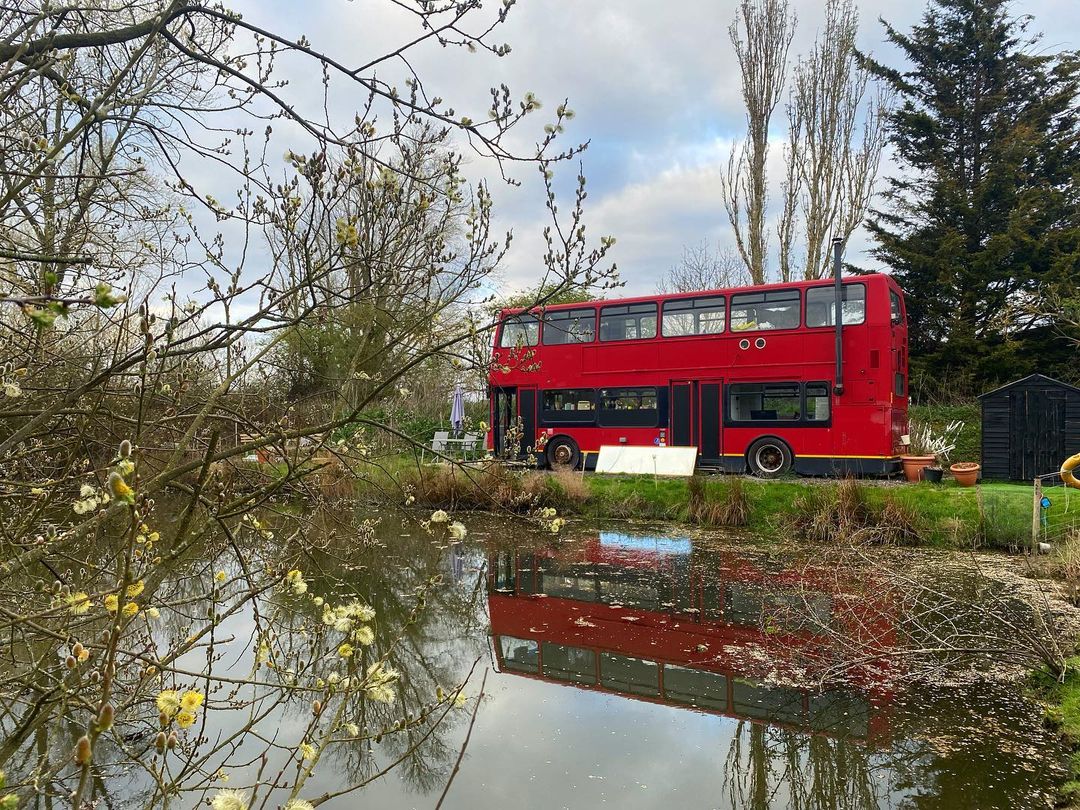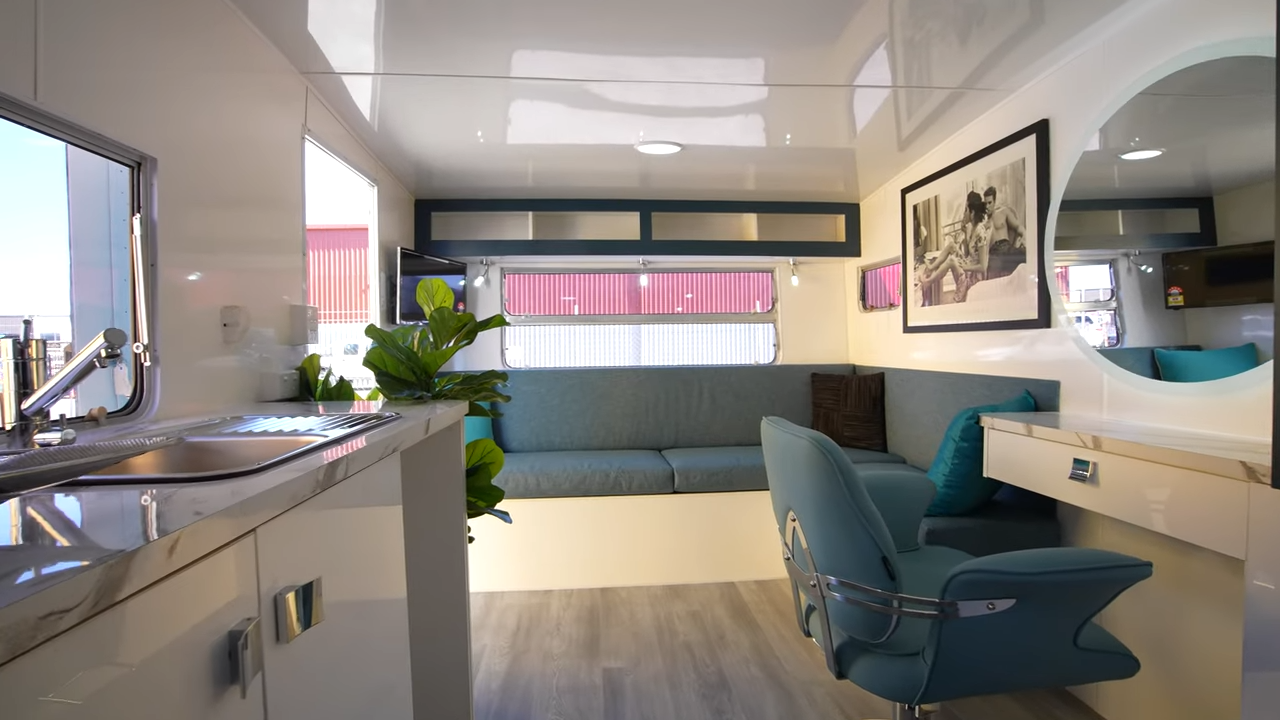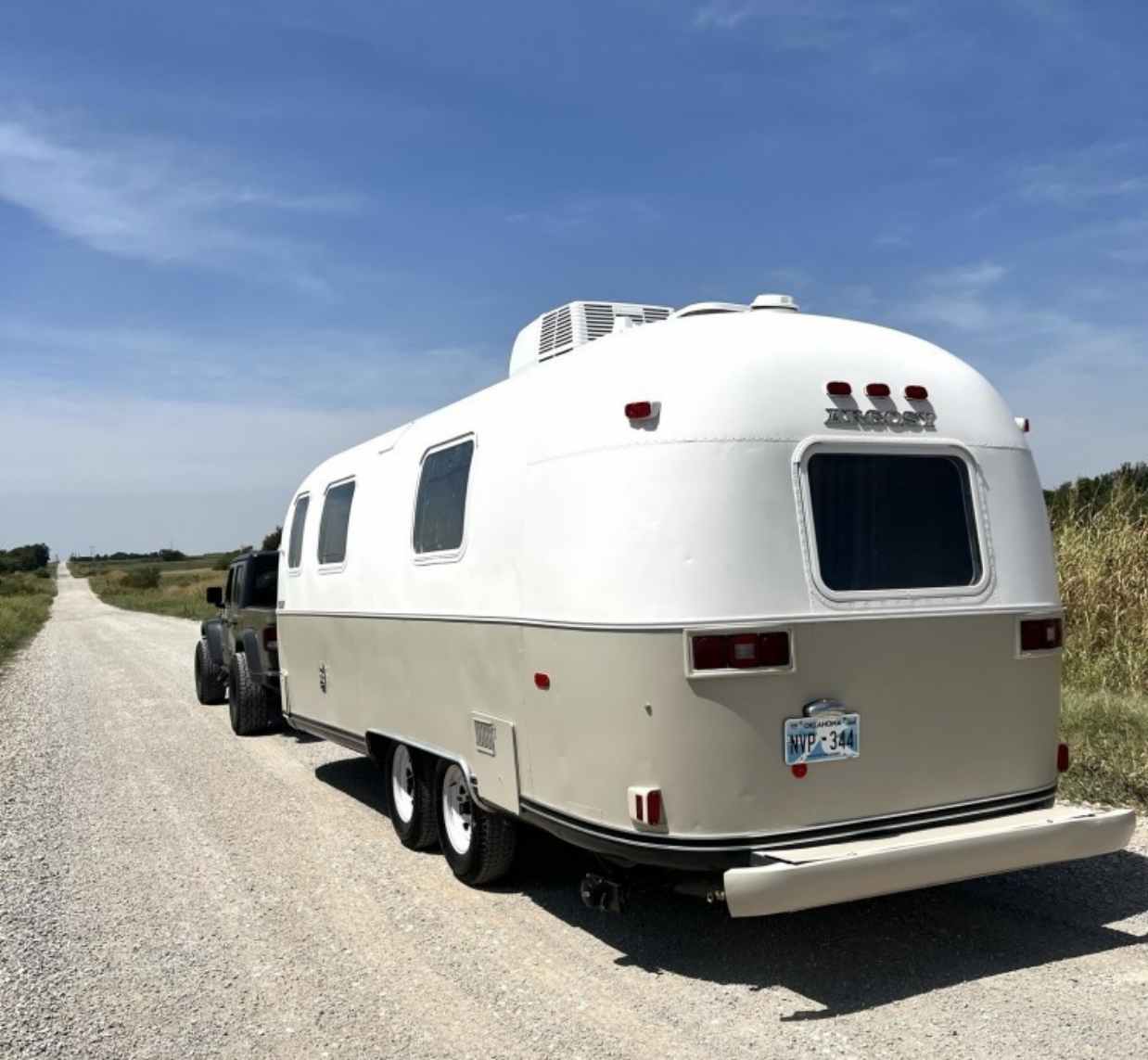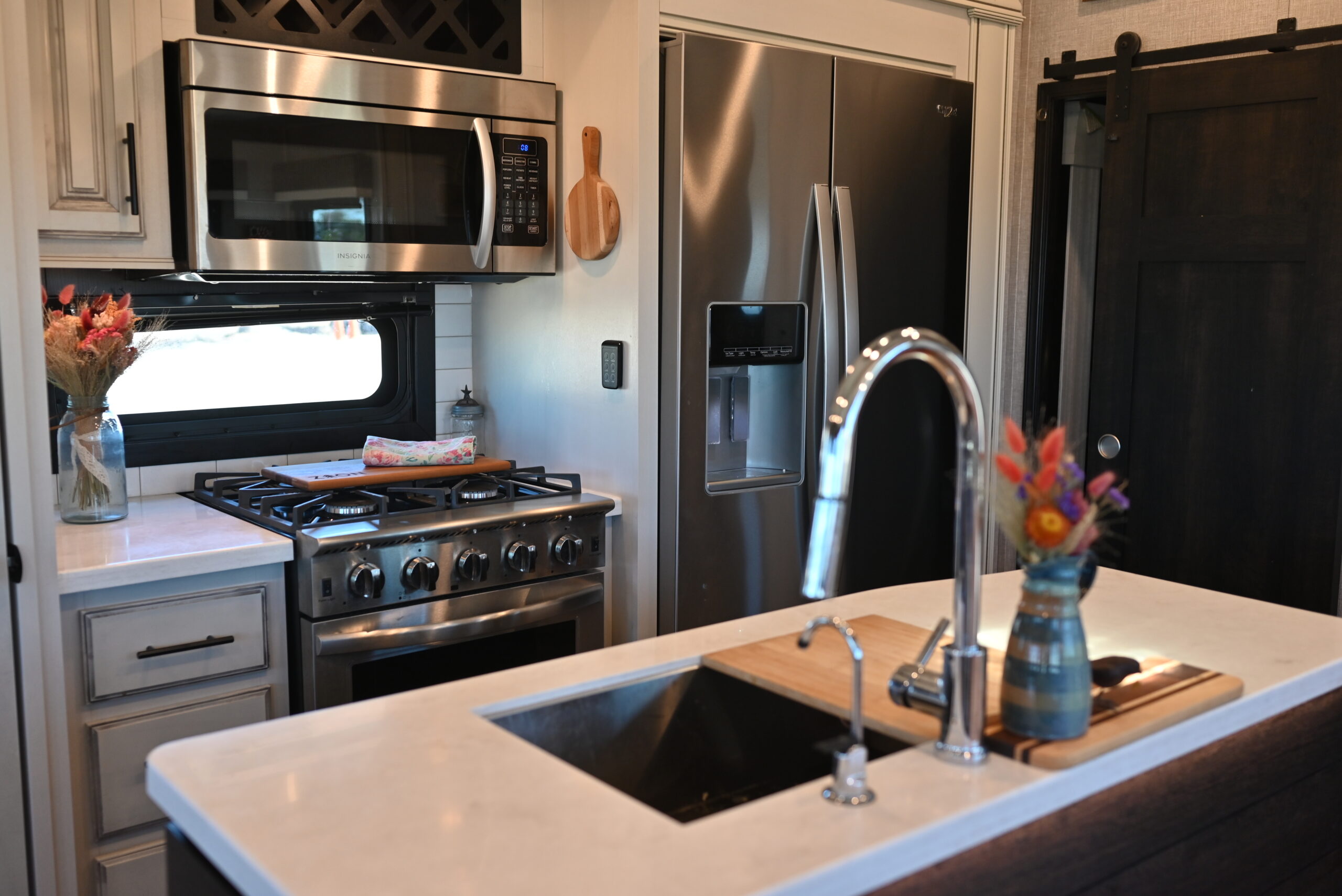
This Double-Decker Bus Conversion Has Twice The Living Space
Charlie MacVicar and Luke Walker, a couple from the United Kingdom, live in a 544-square foot double-decker bus, and they couldn’t be happier.
Since they moved into their bus conversion in 2018, the once newbies to RV and tiny home living have created a fully-functioning abode. It is complete with a wood-fired stove, bathtub, and walk-in closet.
Why did the couple choose a double-decker bus?
When MacVicar and Walker, both in their 20s, decided to move in together, they were sure that living options wouldn’t involve a mortgage or outrageous rental fees. Instead, they opted to build a home on a piece of property in Essex, UK, belonging to MacVicar’s father.
Initially, the couple thought about converting a shipping container or renovating an RV. Ultimately, they settled on a double-decker bus that was in decent working condition and had enough overhead clearance for 6-foot tall Walker to comfortably move about. They purchased the authentic red Go-Ahead London Volvo Plaxton bus in 2017 for $3,435 (£2,500).
How did the couple manage the build?
MacVicar and Walker had no background in building or designing at the time they made the purchase.
“We got really overwhelmed,” MacVicar said. “Like, it was my first time picking up a screwdriver.”
With the help of family, friends, and hired professionals, they could execute a floor plan that worked for them. The bus conversion took about a year to complete and cost about $20,600 (£15,000).
What is the layout of the tiny house bus conversion?
Including the top deck, the bus measures 14.6 feet high, 32.8 feet long, and 8.3 feet wide. The 554-square foot open floor plan is mostly curtainless windows to let in plenty of natural light.
The bus is fully equipped like sticks-and bricks home. It is connected to electricity, WiFi, water, and propane.
“Anything that we would normally have in a house, I don’t feel like we’re lacking in the bus,” MacVicar said. “We’ve made it work.”
The bottom deck includes a:
- Full kitchen with an oven, stove, microwave, farmhouse sink, fridge, a washing machine
- Dining room with a table that seats three
- Living room with a wood-fired stove, two benches, and a small desk space
- An enclosed bathroom with a toilet and sink
The top deck is the entire bedroom area, including a:
- Salvaged Victorian claw-foot bathtub, which was lifted through an emergency window using a crane
- A double bed with two nightstands and a TV
- Walk-in closet with a dressing area
Where is the bus conversion parked for now?
The couple continues to have their tiny home bus conversion parked on MacVicar’s land, and they pay him a small amount for rent. However, the bus is still mobile in case they get the urge to change scenery.
For now, their tiny home on wheels is surrounded by greenery overlooking a pond with their very own rowboat. They even have a couple of goats.
“When you live in a bus, you live a weird life, so you might as well have two goats,” MacVicar said.
What kind of issues has the couple had with the build?
The biggest downside they’ve noticed about their build is the lack of insulation. The bus was never adequately insulated. Despite installed heaters, a wood-fire stove, and an A/C unit, the space is quite cold in the winter and sweltering in the summer. They have to pay particular attention to the condensation to avoid mold.
What should you consider before starting your own bus conversion?
Embarking on a bus conversion is no easy task. Michael Fuehrer from Navigation Nowhere mentions that many people who decide to take on such a project are mainly focused on how to go about completing the actual build. While he agrees that is a massive part of the renovation process, there are more aspects of a conversion to consider.
In the video below, Fuehrer talks about these external factors that affect bus conversion builds.
For more insight on bus conversions, join iRV2 forums and talk to other RV enthusiasts about their projects and share ideas.
If you like this bus conversion, check out this beautifully converted double-decker bus as well.



